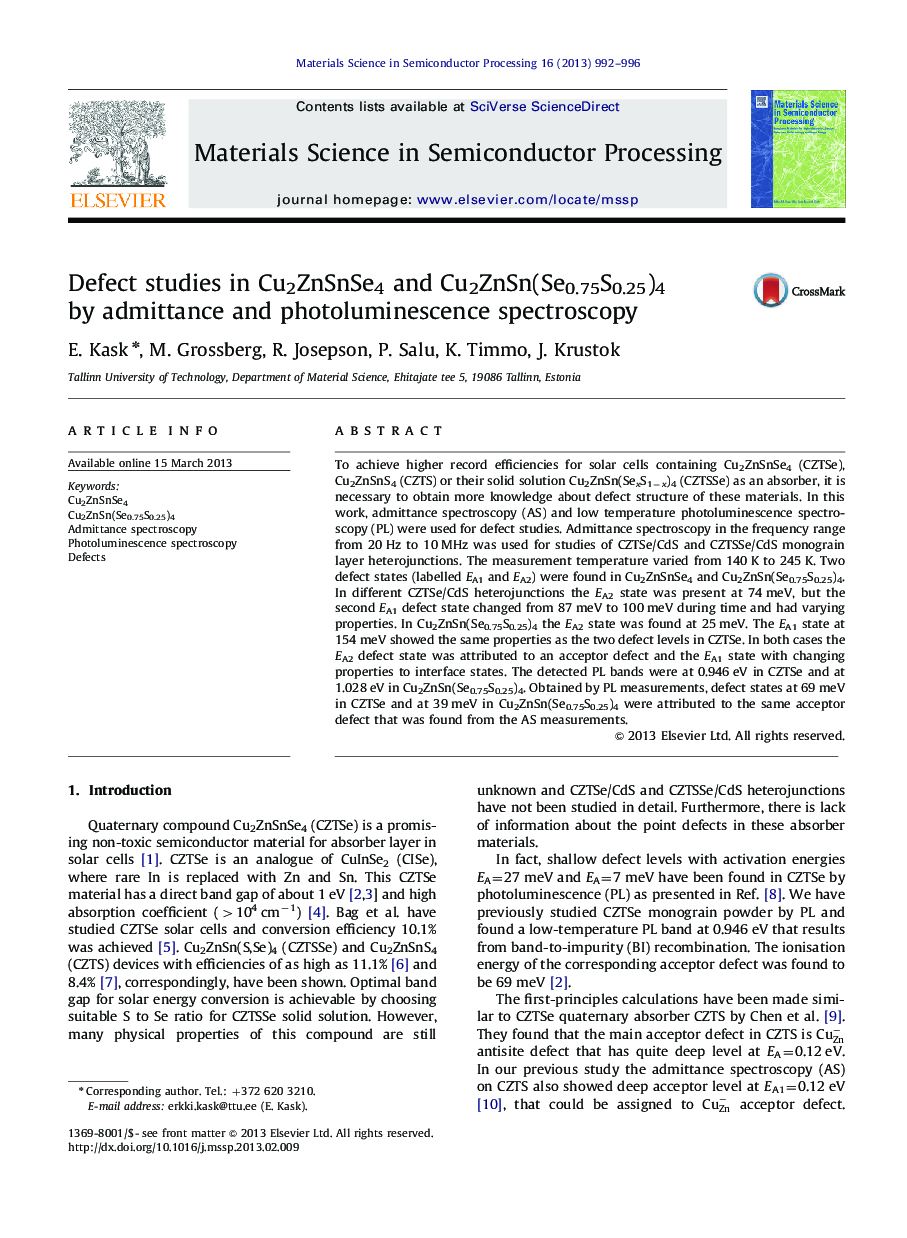| Article ID | Journal | Published Year | Pages | File Type |
|---|---|---|---|---|
| 726869 | Materials Science in Semiconductor Processing | 2013 | 5 Pages |
To achieve higher record efficiencies for solar cells containing Cu2ZnSnSe4 (CZTSe), Cu2ZnSnS4 (CZTS) or their solid solution Cu2ZnSn(SexS1−x)4 (CZTSSe) as an absorber, it is necessary to obtain more knowledge about defect structure of these materials. In this work, admittance spectroscopy (AS) and low temperature photoluminescence spectroscopy (PL) were used for defect studies. Admittance spectroscopy in the frequency range from 20 Hz to 10 MHz was used for studies of CZTSe/CdS and CZTSSe/CdS monograin layer heterojunctions. The measurement temperature varied from 140 K to 245 K. Two defect states (labelled EA1 and EA2) were found in Cu2ZnSnSe4 and Cu2ZnSn(Se0.75S0.25)4. In different CZTSe/CdS heterojunctions the EA2 state was present at 74 meV, but the second EA1 defect state changed from 87 meV to 100 meV during time and had varying properties. In Cu2ZnSn(Se0.75S0.25)4 the EA2 state was found at 25 meV. The EA1 state at 154 meV showed the same properties as the two defect levels in CZTSe. In both cases the EA2 defect state was attributed to an acceptor defect and the EA1 state with changing properties to interface states. The detected PL bands were at 0.946 eV in CZTSe and at 1.028 eV in Cu2ZnSn(Se0.75S0.25)4. Obtained by PL measurements, defect states at 69 meV in CZTSe and at 39 meV in Cu2ZnSn(Se0.75S0.25)4 were attributed to the same acceptor defect that was found from the AS measurements.
